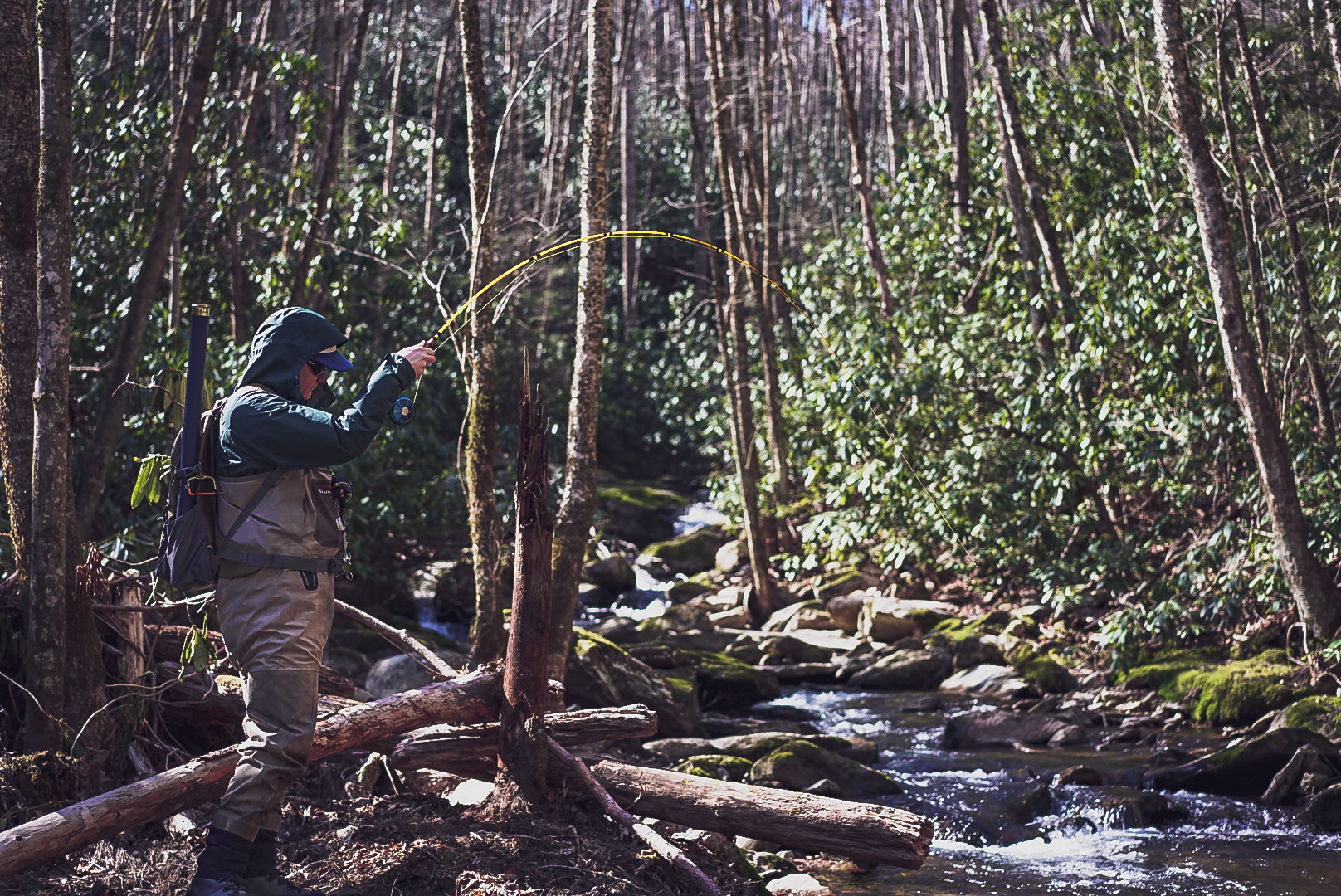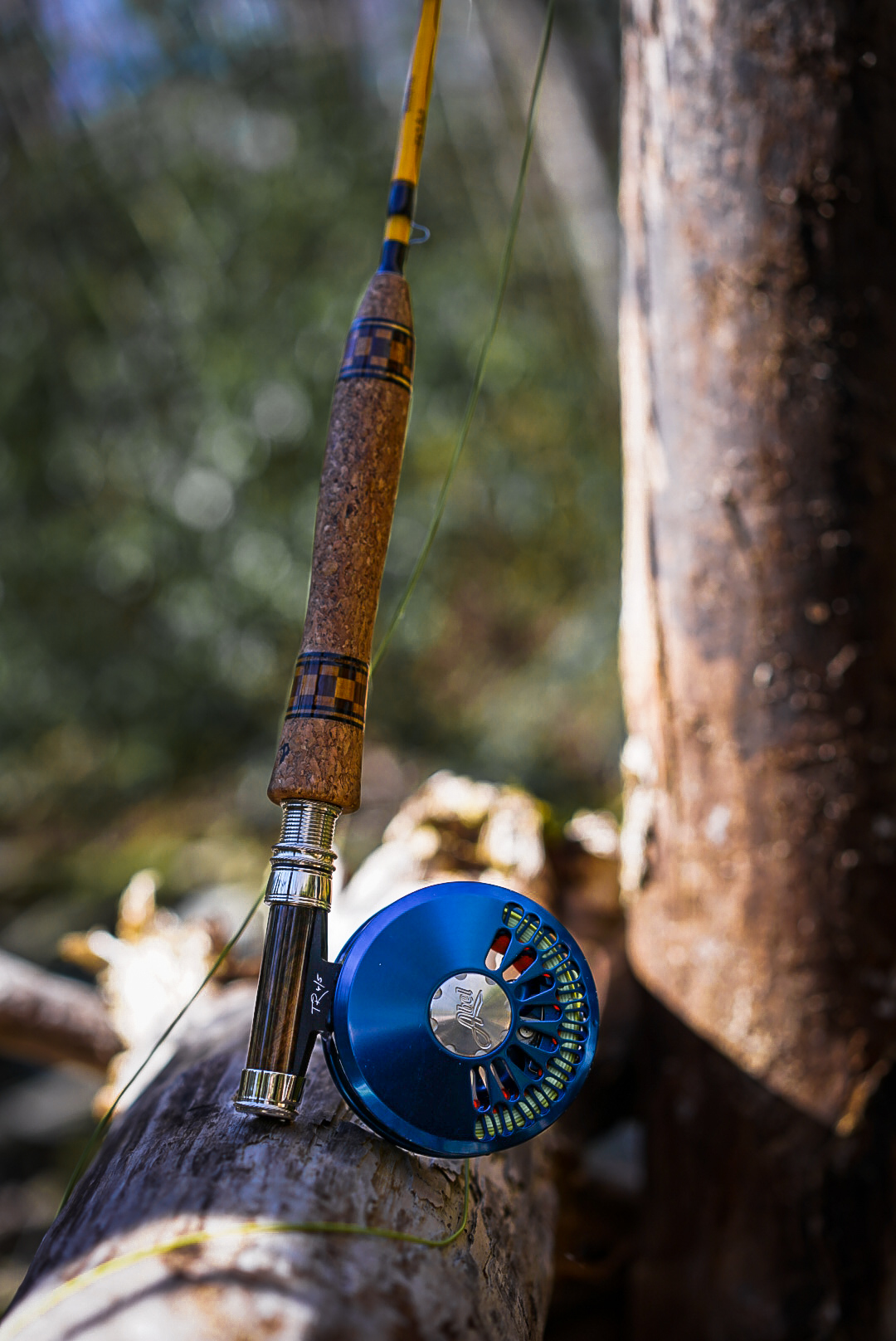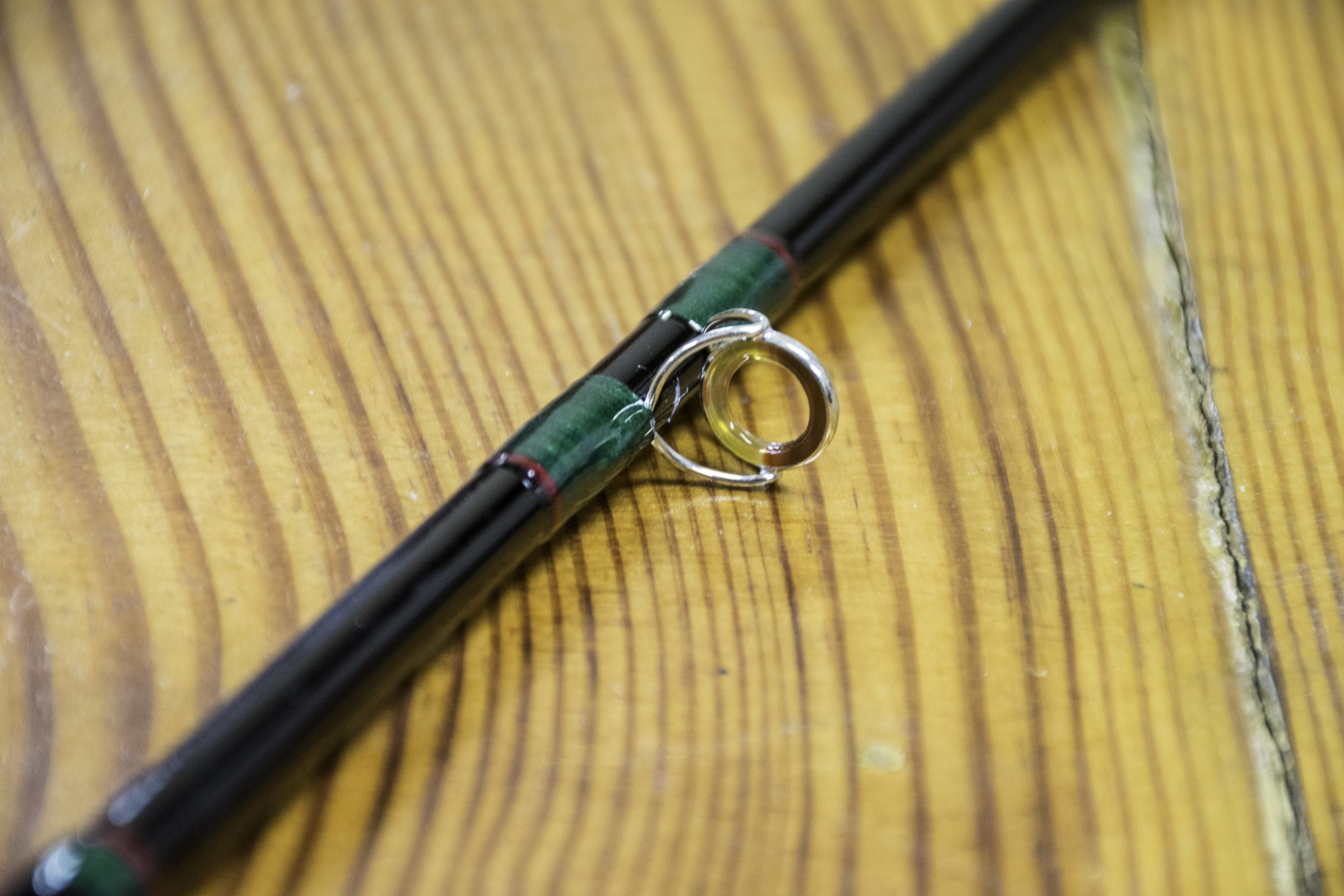The Tale of Two Rods: Fleming McKay Rodsmiths 3wt Carbon & Glass Rod Review
I have been fly fishing in Boone for coming up on four years now and I was surprised to learn that there was a high-end rod maker not 5 minutes down the road from my home. Bill Fleming and his son Will are producing top tier rods of all shapes, sizes, and materials all while adding a unique aesthetic style. Bill was kind enough to lend me two of his small water rods, both 7ft 6in 3wts, one made of fiberglass and one of carbon fiber, to test out on some local water.
The first of the two rods I was able to get on the water with was the fiberglass rod. From a consumer and aesthetic perspective, all Fleming McKay rods come in either a steel tube with a textured surface on the outside for grip or Bill will make an all wooden case that is a work of art in its own right. The rod I tested out was a bright, retro yellow that was wondrous to behold. The yellow blank reveals its layers as you stare into the color and the black wraps, guides, along with a signature handle that is a mixture of cork and a wooden checkerboard that is made in house makes this rod heirloom status. The rod also sports a lovely down-locking reel seat.
I took the 3wt fiberglass rod to one of my favorite local blue lines. The stream requires tight, technical casting into plunge pools and short fast riffles. The fiberglass rod loaded it with ease and was extremely accurate and short and medium distances. The rod also performed well the few times the stream was large enough to perform a full long-range cast. All of the fiberglass rods made by Bill Fleming are constructed from modern S-glass blanks. Although fiberglass rods are usually thought of as a nostalgic piece of equipment, make no mistake that S-glass is a modern material that boasts a high strength to weight ratio while simultaneously providing a sense of touch and finesse. I made a point with both rods to throw the three main types of fly rigs while testing out the rod on the water. The fiberglass rod was an absolute dream with a dry dropper set up and my loops have never looked more picturesque. The rod has enough backbone to easily throw a double nymph rig under an indicator. I even threw on a couple streamers which it also handled with ease.
Hooking into fish and fighting fish was no problem with the fiberglass rod. I caught everything from your typical 6-8 inch wild trout all the way up to a 15 inch wild brown and the rod never struggled to perform. The bottom half of the rod provides a surprising amount of strength and turning power while the top half provides ample tippet protection when fighting a larger fish. I honestly don’t think I even got close to this rod’s performance limit. I would highly recommend the fiberglass rod to anyone who is interested in an heirloom quality rod. Bill can also customize the color of the blank, handle shape and handle material, so there is a lot of options for personalization.
I waited about two weeks before I began testing the Carbon Fiber 3wt rod. I went back to the same small water stream that I tested the fiberglass rod on so that I could keep my review consistent. Aesthetically, the carbon fiber rod shows off a handsome forest green blank with lighter green wraps that are outlined in the perfect amount of red for contrast. The handle is Bill’s signature combination of cork checkerboard wood inserts. The guides on the rod have agate stone lining them which produces a super smooth line travel through the guides both when casting as well as when fighting a fish. The carbon rod also had a downward locking reel seat.
*Note this was a photo of a carbon rod with the traditional reel seat
The Carbon fiber rod felt lighter in hand than the fiberglass rod, which is to be expected. Both rods were very light though. The handle on both rods was bigger than you would expect but results in a lot more comfort when casting and no hand soreness or fatigue as the fishing day goes on. The carbon rod had a faster action than the fiberglass rod but not too fast. I paired the carbon rod with a half weight heavy MPX line which helped it load up perfectly. The accuracy on the water was almost identical to the fiberglass, they were both stellar. I did find that the carbon rod could roll cast better and with more ease.
The fish handling ability of the carbon rod was impressive. The carbon rod seemed to have more backbone. Instead of the half and half feel of the fiberglass rod the carbon rod had more of a ⅓ to ⅔ feel to it. Meaning that the top third of the rod was soft and subtle for those delicate casts and mends while the bottom ⅔ provided the strength and stopping power. The carbon rod also handled dry-dropper, indicator rigs, and streamers with ease. I do think the carbon rod could handle heavy rigs and streamers due to the carbon fiber.
Both rods are truly exquisite and you can see and more importantly feel the craftsmanship that Bill puts into every rod. I would recommend both rods with my highest level of endorsement. My personal favorite was the glass rod, because I am a sucker a small water glass rod. The combination of Bill’s unique aesthetic and the modern performance of an S-glass rod won me over. The carbon fiber rod is still an excellent rod and anyone would be lucky to own either. It really comes down to personal preference and material choice. The look and feel of a modern fiberglass rod versus the lightweight and stronger carbon fiber. I hope this review helped anyone that was considering buying a Fleming McKay rod and if you weren’t considering buying one, you probably should. Follow the link below to head to their website and tell them I sent you!
https://www.flemingandmckayrodsmiths.com/







